Local SEO ranking factors are still a black box for many companies that value local traffic.
Nobody actually knows what Google values. But studies and experience can reveal what is having an impact on ranking and placing in the coveted local pack.
According to Moz’s 2018 local search ranking factors survey, there are some changes to the importance of off-site factors.
Google My Business listings are more important, links are “working as well as ever,” and reviews are more important now than in 2017.
Meanwhile, the full report still lists on-site factors such as keyword relevance, mobile-friendly design, and volume of quality content on the website are all some of the most important factors.
Look at my last article for Search Engine Journal for my personal pick of the top 25 local search rank signals.
For an action-oriented checklist, here are 50 on-site and off-site points to audit.
Checklist: On-Site SEO
1. Optimized Home, About & Contact Pages
Make sure you have – and have optimized – your Home, About, and Contact pages to contain location information.
It’s shocking how often someone will miss optimizing local on at least one of these pages.
Tip: Put the name, address, and phone number (NAP) for all of your locations on the contact page.
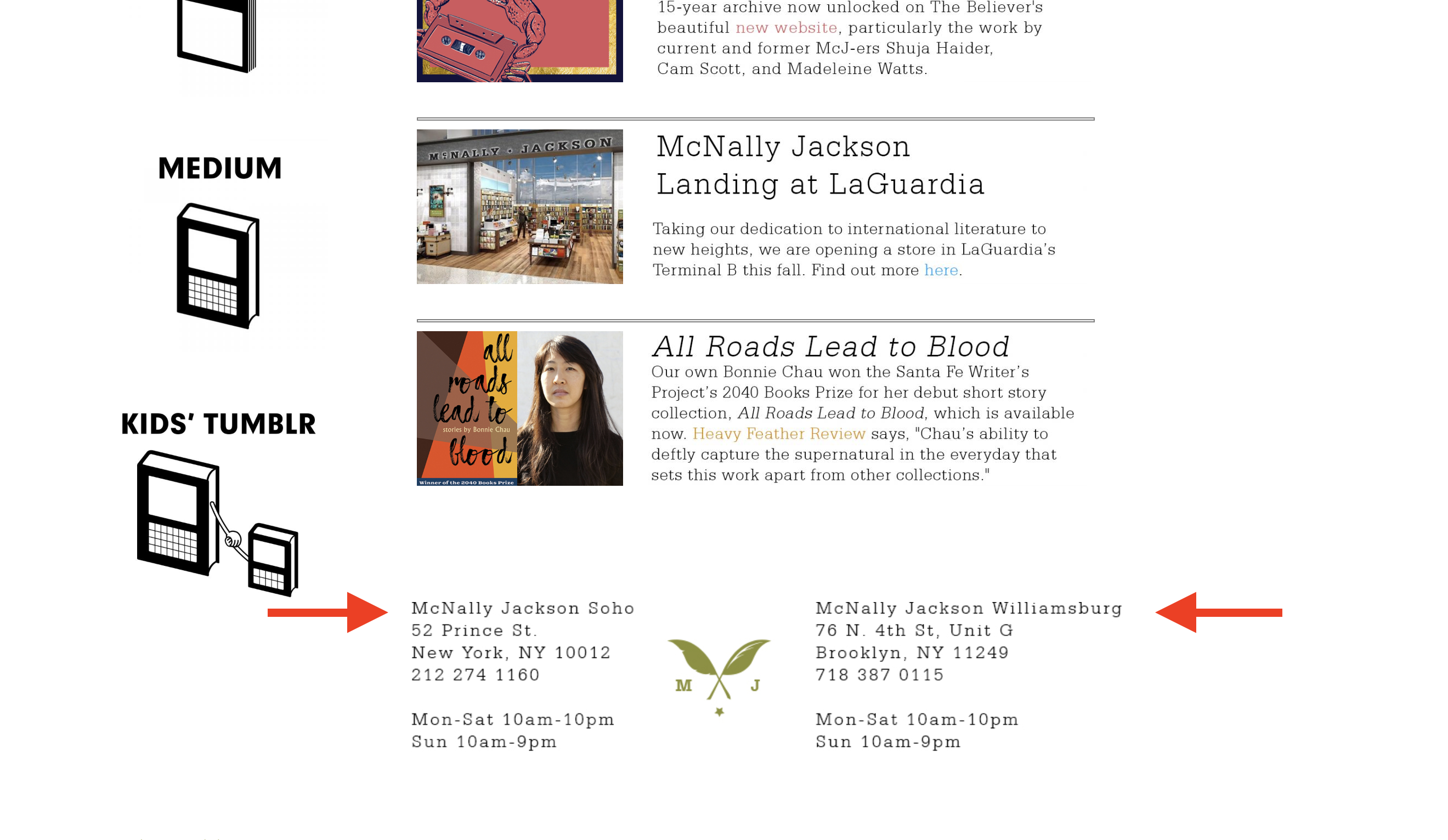
2. Optimized Footer
Speaking of NAP, you should put this vital information is in the footer of your website, as well.
If you have multiple locations, you can list all of them.
Tip: Optimizing your footer with other content such as calls to action can increase conversion rates up to 50%.
3. Clickable Mobile Phone Numbers
Some mobile platforms make phone numbers automatically clickable, but others don’t.
Boost your phone conversions by following Google’s guidelines for making your on-site phone numbers clickable.
Tip: Consider adding a button that links to a phone number in addition to the number itself to increase usability.
4. Consistent NAP
This is subtle but important.
Make sure your NAP is consistent across your site and across all off-site resources (more on that later).
For example, “1234 Anywhere Street” and “1234 Anywhere St.” mean the same thing to most people, but can muddy up your SEO if you use them interchangeably.
Tip: You can use tools like Moz Local to audit this.

5. Structured Data Markup
Following from the previous point, you should make sure your site has structured data markup including all relevant information like your hours, departments, and NAP.
Tip: Google provides a tool to test your structured data markup.
6. Google Search Console
Google Search Console is a free tool that lets you gain insight into how many people reach your site and by what means they got there.
It also alerts you to technical errors that can hinder your site from ranking well on Google.
Add your site and make sure it checks out.
7. Bing Webmaster Tools
Bing Webmaster Tools is Microsoft’s alternative to the Google tool above.
With an estimated 20% U.S. market share in search, you shouldn’t neglect setting up your site with Bing’s tool.
8. Optimized URLs
Make sure your page names and URLs contain location words.
Tip: Use a consistent and user-friendly system for all location and regional pages you create (see below).
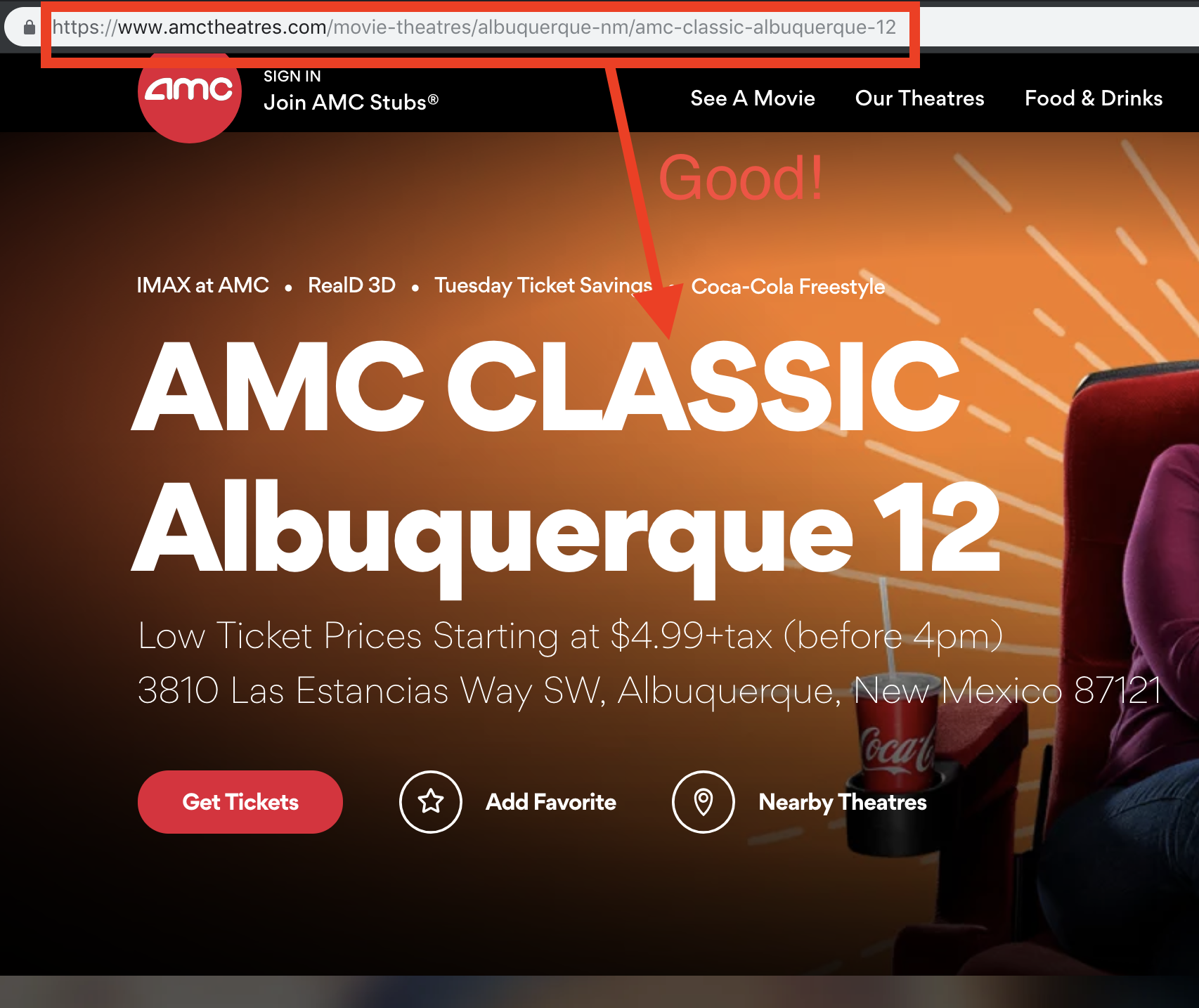
9. Optimized Title Tags
Instead of having more generically SEO’d title tags, include location words. Ensure that your title tags are fewer than 60 characters, as well.
Tip: Use Google Keyword Planner to help find more relevant keywords.
10. Optimized Descriptions
Aside from making people want to click on your pages, your descriptions should also contain location words. Make sure they’re around 160 characters or less.
Tip: Avoid keyword stuffing in descriptions. Make them useful for human visitors.
11. Image Tags
You can use image optimization for local as well.
Besides photos of locations, you should also tag logos on appropriate pages with a geo term, as well.
12. Mobile Friendly / Responsive
This is a huge part of optimizing for local search is capturing mobile traffic.
Aside from being a search signal, having a mobile-friendly website increases usability greatly.
Tip: When creating your mobile web design, make sure the NAP has high visibility and is consistent with desktop versions.
13. Location Pages
Most businesses with multiple locations should still only have one website, but you should still have a specific page for each location.
Tip: This is an easy place to get inconsistent with NAP. I like to use a spreadsheet to have a “canonical” version of all contact information across multiple locations.
14. Regional Pages
If your business locations are spread out across multiple states and regions, you should also have regional pages.
Tip: A logical sitemap or outline will help you structure your content.
15. Embed Google Maps
Make sure you have embedded Google Maps in your contact, location, and regional pages.
While it may not help SEO as much as it used to, it still creates a great user experience.

16. More Local Pages
Your general content strategy can vary depending on how your business works – if you’re just a straight-up local business with a few locations or a national business with many locations.
If you’re still struggling to come up with more local content and you’re the former, consider adding pages targeting major cities that are proximate to your locations.
Tip: When adding more local pages, make sure the content does not duplicate other content on your site.
17. Local Links Out
This is a local version of standard good SEO practices.
Having a high-quality, diverse set of outbound links is good for your search rankings.
Where relevant, you can link out to local resources like state, county, and city offices, other local businesses, or other relevant places.
Tip: Publicizing events and charitable activities is an easy way to get local links from media and other sites.
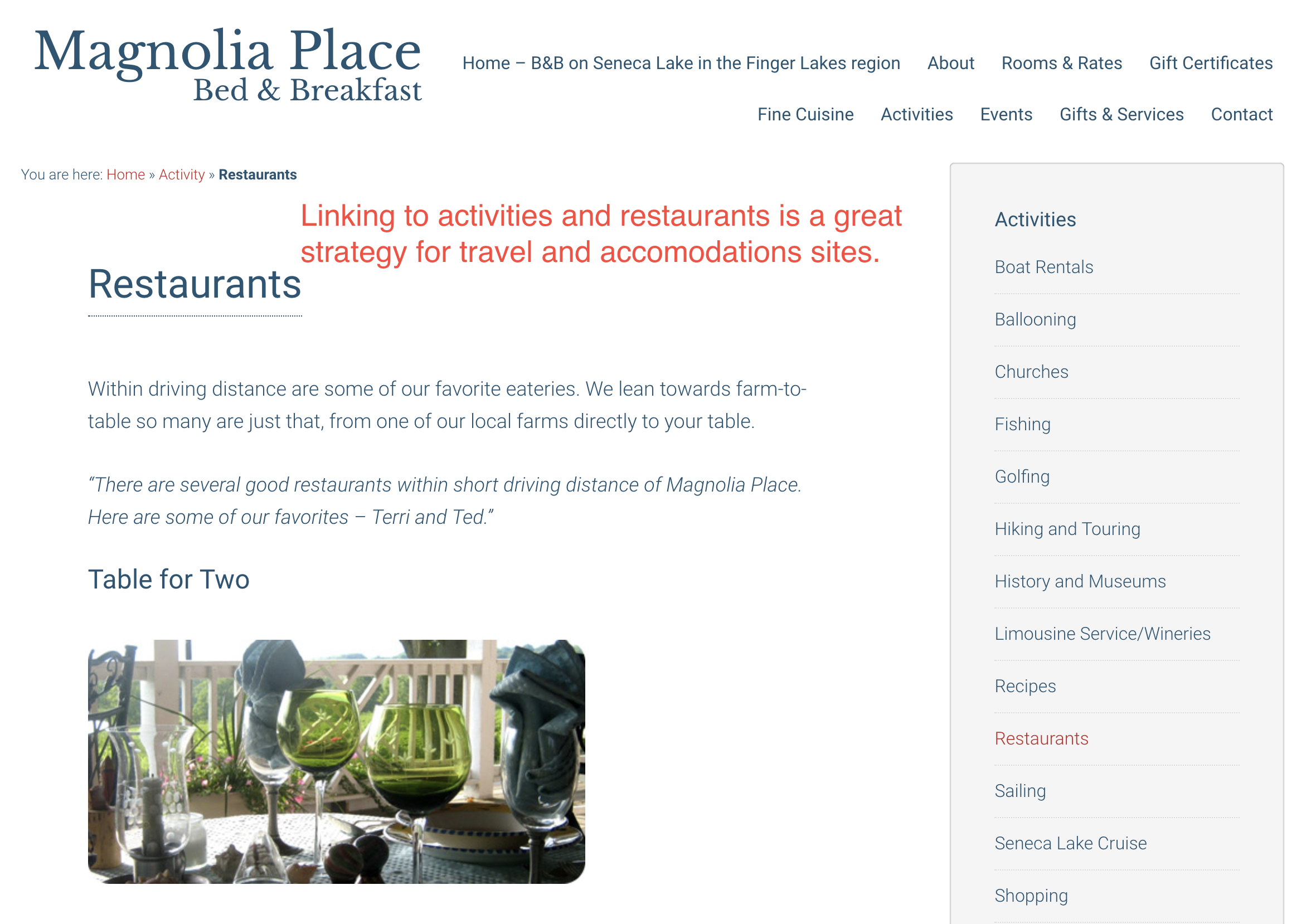
18. Press Section
Even if your business isn’t regularly making the news, having a section for company news is an easy way to generate unique, high-quality content that can be highly localized.
19. Guides & How-Tos
Generating guides and how-to pages is another easy way to make desirable local pages.
Even the most B2B-centric businesses can generate some guides that have a lot of localization.
Tip: You can create extensive content in this area and use bits and bites of it to fuel social media.
20. On-Site Blog
Blogging might seem like a relic, surpassed by the speed and ease of use that social media offers. But it’s still a useful tool to generate quality content on specific topics, which helps get valuable inbound traffic.
Tip: Stay consistent and varied. Unless you have a very niche site, you should cover varied subtopics to capture more search.
21. Powerful Calls to Action
The goal isn’t just to get traffic to the site. You want it to convert.
Make sure your calls to action are powerful, and where relevant are location-specific.
Tip: You can create extensive content in this area and use bits and bites of it to fuel social media.
22. Update Frequently
Make sure your content is fresh and that the Last Modified date on search results page reflects that.
Even if you’re ranking for local, users are much more likely to go to a site that has been recently updated.
Tip: Here’s a guide for updating Last Modified on WordPress.
23. Optimized H1 and H2 Tags
Your meta tags and body copy are optimized for mobile. Make sure your H1 and H2 tags are, as well.
24. Load Time
Does your site load quickly? How about on mobile?
Again, as much local traffic is mobile-based, having a fast load time is crucial.
Tip: Page load speed is a signal for desktop and mobile search ranking on Google.
25. Internal Site Structure
A final on-site thing to look at: as you’ve generated many pages of local content, your site can get unwieldy.
You’ll want to check on your site structure to make it comprehensible to both human visitors and search engines, alike.
Checklist: Off-Site SEO
So you’ve done all or most of the above. You’re on relatively even footing with most other business sites out there, but if you want to excel in local search, then continue on to these more niche items.
1. Google My Business
This is by far the most important off-site SEO thing to check when setting up your local SEO.
As per the latest Moz Local Search Rankings survey, Google My Business (GMB) comprises 25% of the most important ranking factors for getting on the Google local pack.
Make sure you’ve claimed your business, set up the NAP and hours, and selected the right categories for your business. GMB is going to be the hub for much off-site activity.
Tip: Here is a good guide for setting up your GMB listing.
2. Bing Places For Business
Bing Places for Business is Microsoft’s analog for GMB. Claim your business and set up the NAP here, as well.
Tip: Don’t neglect Bing. Despite its low mindshare, it is the default search engine for Windows users.
3. Facebook
Even though it’s facing more backlash than ever, Facebook is still showing amazing growth and revenue figures.
You need to be there from a business perspective.
Tip: Make sure your page has consistent NAP, hours, and website.
4. Google Local Pack
The Google Local Pack (formerly with seven, three, and now sometimes four listings) is the most important place to be in local search – even the first organic listing, as it appears above them.
To get into the local pack, you need to properly set up your GMB and have a strong online presence (hint: follow this checklist).
If and when you are on the pack, make sure your info is correct as you’ll have increased visibility.
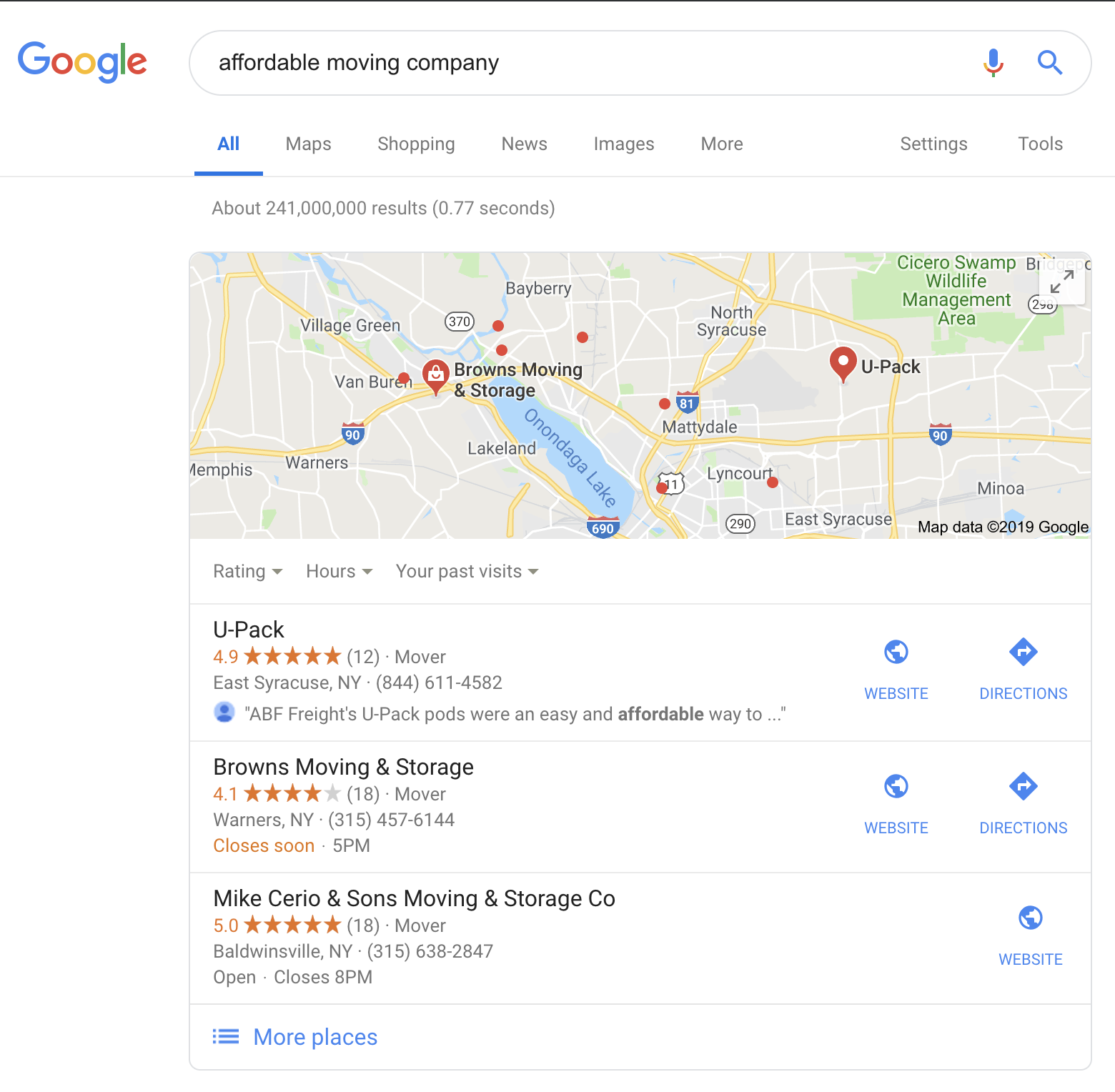
5. Set Up Review Sites
To garner reviews (mostly positive, let’s hope) in the first place, make sure your business is listed on as many relevant ones as possible.
These include Yelp, Angie’s List, and BBB.
Tip: Again, make sure your NAP, website, and hours on all review sites are consistent.
6. Check Your Existing Reviews
Use an online reputation tool like Brand Yourself to search your brand name and comb through your reviews.
You want to address any negative reviews – this actually helps as a search signal.
Also, reviews are huge in local SEO. The oft-mentioned Moz Local Search Ranking Factors study has them at over 15% of the important signals.
Tip: Don’t just respond defensively to negative reviews. Consider reaching out personally to see how the customer was affected and try to resolve their problem.
7. Inbound Links Portfolio
It’s the same as regular SEO; you want a variety of inbound links that are relevant, are authoritative, and gained organically.
This will help your rankings for searches with or without local intent.
8. Local Links In
In addition to a standard high-quality inbound link portfolio, getting links from local sources is important for local SEO.
If you’ve followed along with the on-page checklist, then some good local link sources would be blog posts, fundraiser pages, events, and press or news posts.
Tip: Getting these links with local keyword anchor text can be invaluable if you have any control over it.
9. Social Listings
Every business should probably be on Facebook, but probably not on every social platform. Consider your business and the demographics of different platforms and make accounts/listings for every relevant one.
Tip: If you’re considering paid campaigns, most social platforms still have underpriced attention.
10. Online Directories & Citations
Make sure you’re listed with consistent NAP, website, and hours on directories like YP, Foursquare, and Yahoo Localworks.
11. Maps
Make sure your business is listed on all mapping resources.
GMB and Bing Places for Business should take care of Google and Bing Maps, but there are other online mapping services with their own submissions, like Apple Maps MapQuest, RoadTrippers, and Waze.
Tip: Keeping exactly specific NAP is essential for these listings.
12. Engage Influencers
Paid influencer campaigns are sometimes looked down upon, but they’re underpriced channels for attention.
Even if you don’t go down the paid influencer rabbit hole, positively interacting with influencers in your space grows your network.
Tip: Here’s a good crash course on launching an influencer marketing campaign.
13. Local Brand
This point straddles some of the on-site factors and local links point above.
If at all possible, try to focus on building your local brand, whether it’s through events, a separate marketing initiative, or branded content. This is an invaluable source of links and traffic, which both help immensely.
Tip: Building a brand often means not selling – at least upfront.
14. Truly Great GMB Photos
This is part of setting up your GMB, but it bears calling out separately.
If your business’ photos on GMB aren’t extremely high quality, your listing will suffer.
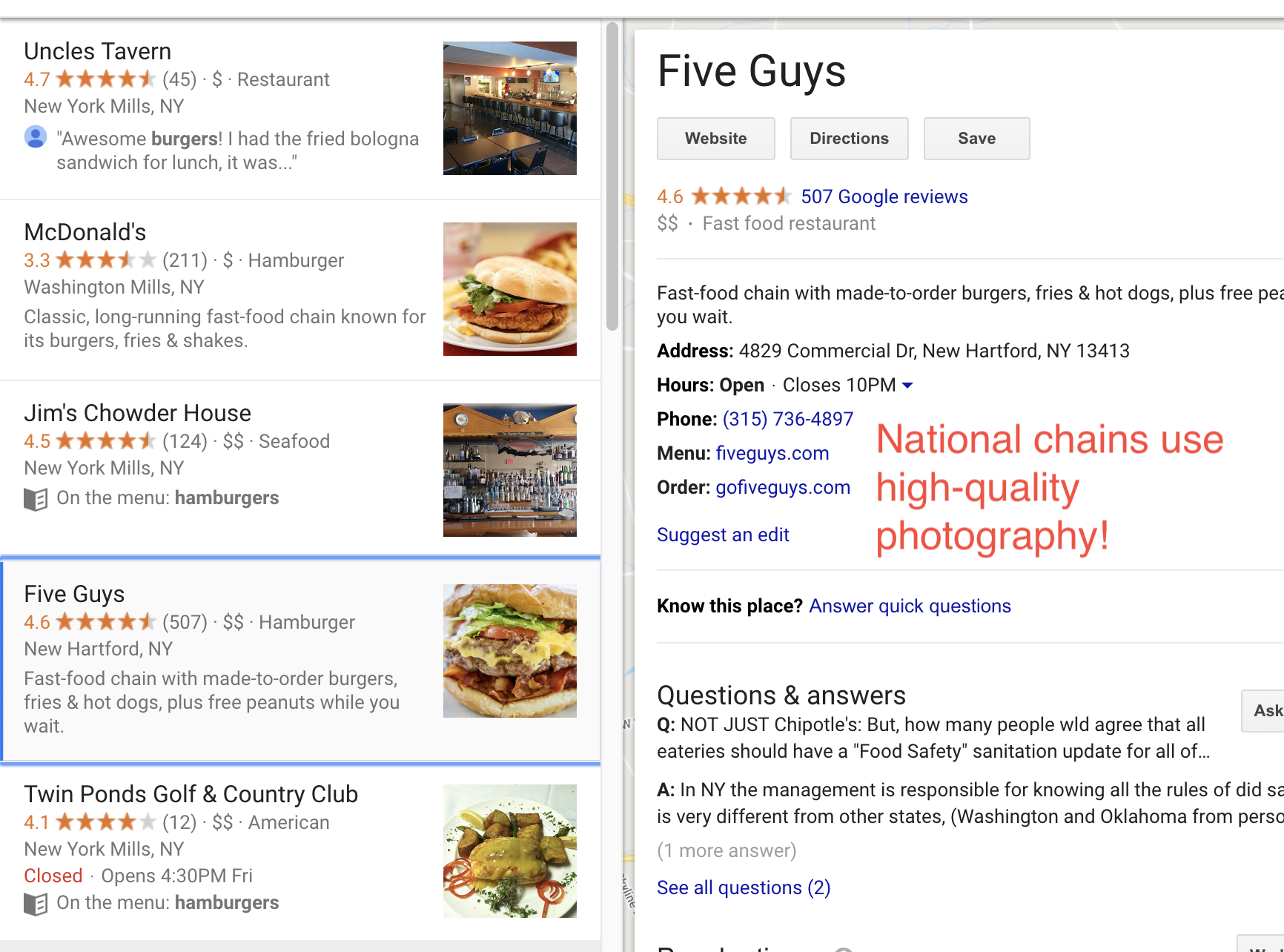
15. Google Posts
You can make posts directly through GMB with news, events, and products. These can appear in Google Search and Maps.
Tip: It’s a best practice to add a compelling piece of media to your posts.
16. Google Q&A
At the end of 2018, Google added the ability to add Q&A rich results to your website.
Even though it’s technically an on-site type of thing, actually answering Q&As will be an off-site activity that can add much value for your customers and ranking factors.
17. Google Reviews
This point also straddles the on-page and off-page concept.
You should encourage customers to leave reviews on Google (and obviously also offer a good customer experience).
Reviews explicitly on Google have the most effect for ranking.
Tip: Here’s some advice on getting customers to leave positive reviews.
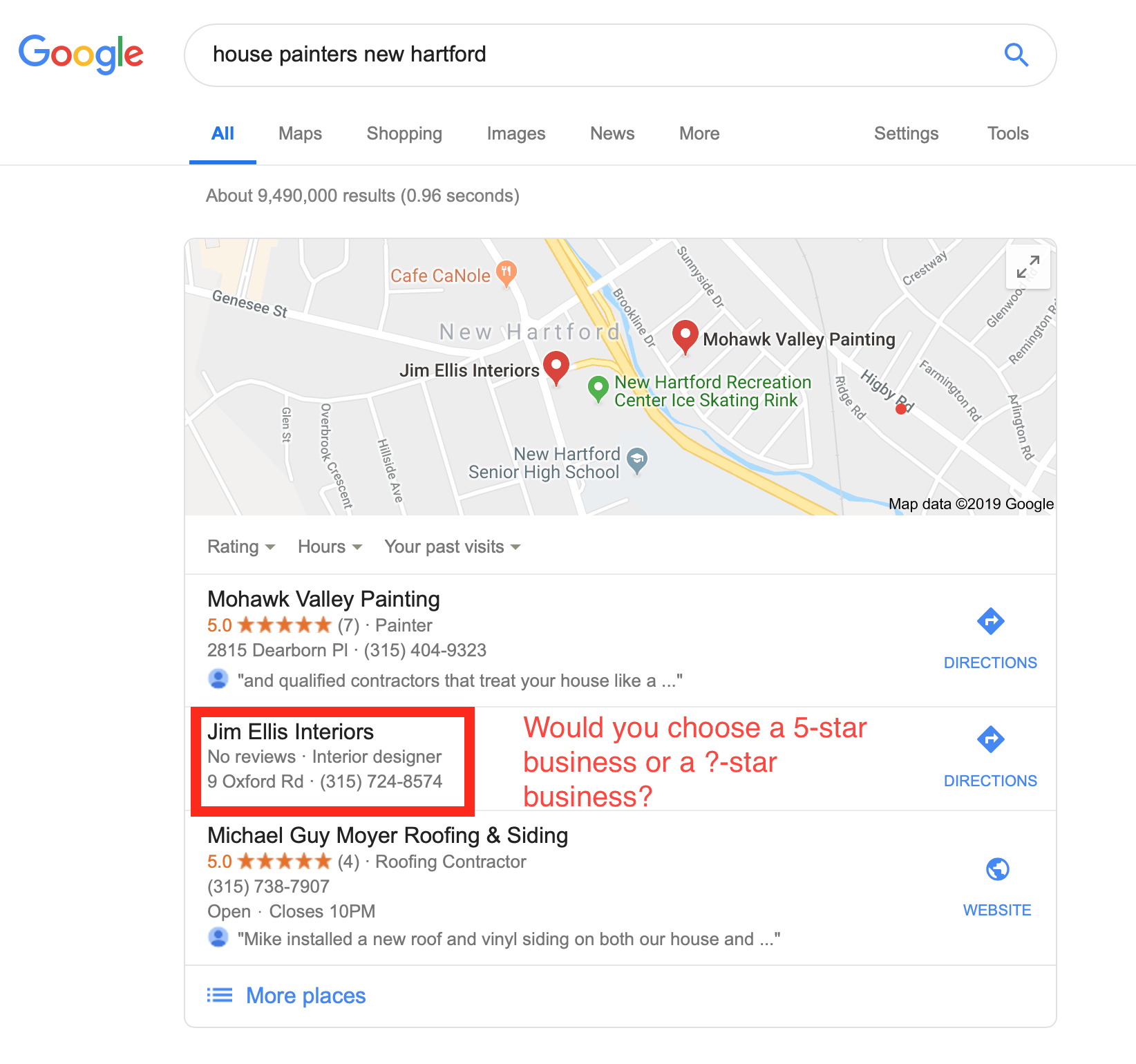
18. Active GMB Management
By generally following the above advice, you’ll be on the way to managing GMB well, but this deserves a special shoutout.
By staying active on GMB – answering questions, responding to reviews, making posts – it seems like you improve factors for ranking.
19. Industry-Specific Websites
Make sure you are listed on all the industry-specific websites where people are searching.
For example, if you’re in the hotel industry, you need to be listed on online travel agencies and be integrated as a hotel on Google.
Tip: If you’re unsure if this applies to you, examine several typical ways customer funnels to see what intermediaries there are.
20. Over-Reliant on Citations
Even though it’s important to set up the biggest citations, keep in mind: It’s less and less valuable for your entire link profile or local SEO strategy centers on building hundreds of citations across low-value sites.
Tip: The top-tier citations are still important, but spending time creating hundreds of low-quality citations will be a waste.
21. GMB Spam
Searching through local Google business listing and reporting competitor spam can help you rank within the local pack by reducing competition.
And you’re actually improving search results for everyone.
Tip: You can also edit or report listings that keyword stuff.
22. Competitor Spam
If you’re in a competitive industry, it can be effective to track down and report all spam listings for competitors on any sites and directories.
This includes fake reviews and fake duplicate listings.
23. ‘Google Us’
One kind of tricky thing to do is to use other calls to action or marketing to encourage customers to Google the business rather than go directly to the site.
This increases search volume for the business, which is a factor for ranking.
Tip: You can also encourage customers to search for your reviews on Google to increase branded searches.
24. Yelp Check-In Offers
Giving customers Check-In Offers on Yelp can improve visibility on Yelp and increase positive reviews, which is one of the most important signals for local SEO.
Tip: Another way to increase Yelp visibility is to encourage satisfied customers to share photos on Yelp.
25. YouTube
Do you have any video content? It’s another result that can show up in local search.
Make sure it’s uploaded to YouTube and has good title, description, and keyword optimization.
Tip: You can geotag video and include NAP and website in the description.
In Conclusion
This is a fairly lengthy, comprehensive list of points to look out for in setting up or auditing your local SEO plan.
You don’t need to follow all of them right away, but successful marketers will end up doing most or all of them as they continue optimizing to capture local traffic.
More Resources:
- Top 25 Local Search Ranking Signals You Need to Know
- SEO Checklist to the Perfect Location Page
- Local SEO: The Definitive Guide to Improve Your Local Search Rankings
Image Credits
Featured Image: Unsplash
All screenshots taken by author, September 2019.





